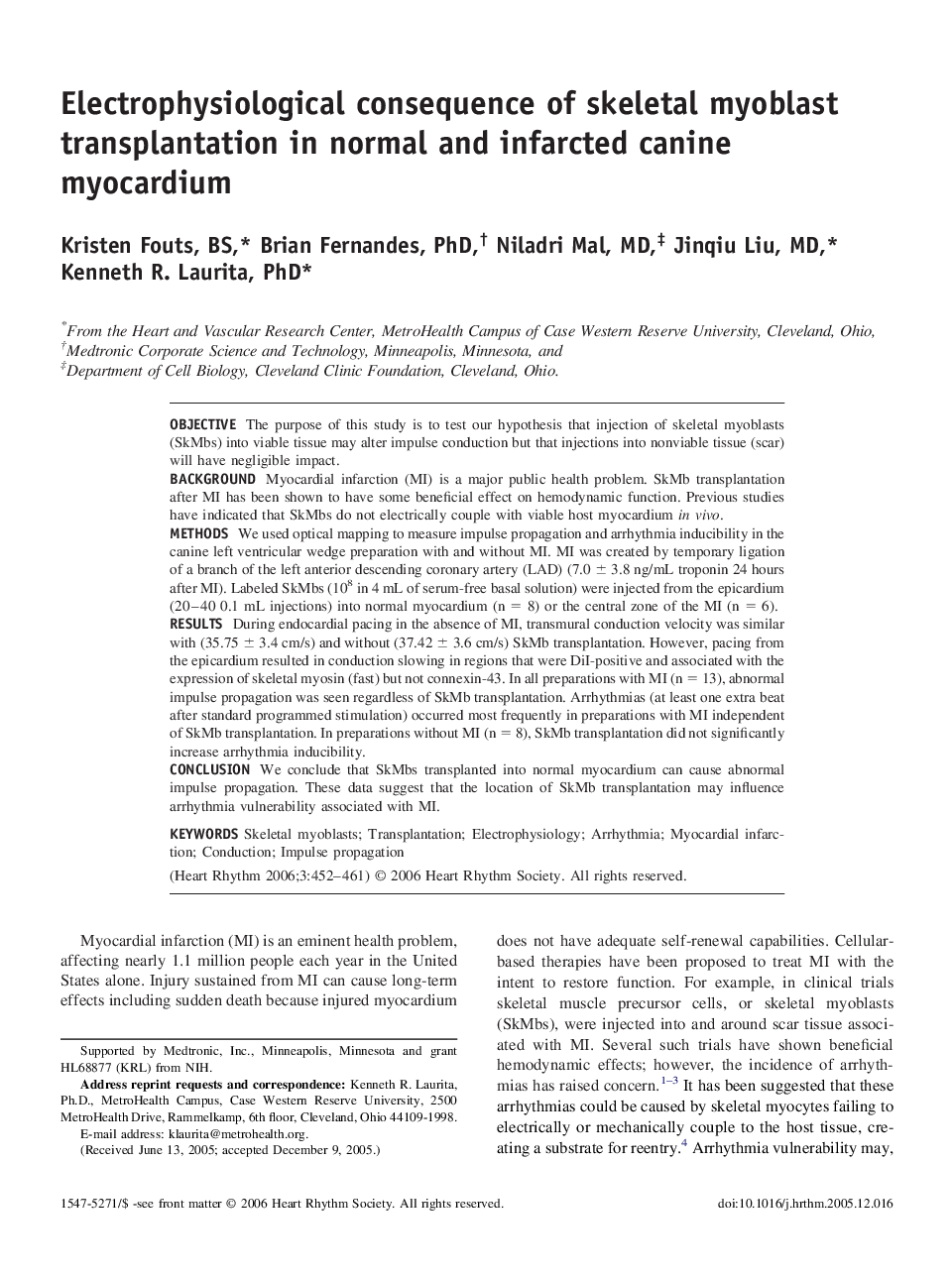| کد مقاله | کد نشریه | سال انتشار | مقاله انگلیسی | نسخه تمام متن |
|---|---|---|---|---|
| 2925274 | 1175937 | 2006 | 10 صفحه PDF | دانلود رایگان |

ObjectiveThe purpose of this study is to test our hypothesis that injection of skeletal myoblasts (SkMbs) into viable tissue may alter impulse conduction but that injections into nonviable tissue (scar) will have negligible impact.BackgroundMyocardial infarction (MI) is a major public health problem. SkMb transplantation after MI has been shown to have some beneficial effect on hemodynamic function. Previous studies have indicated that SkMbs do not electrically couple with viable host myocardium in vivo.MethodsWe used optical mapping to measure impulse propagation and arrhythmia inducibility in the canine left ventricular wedge preparation with and without MI. MI was created by temporary ligation of a branch of the left anterior descending coronary artery (LAD) (7.0 ± 3.8 ng/mL troponin 24 hours after MI). Labeled SkMbs (108 in 4 mL of serum-free basal solution) were injected from the epicardium (20–40 0.1 mL injections) into normal myocardium (n = 8) or the central zone of the MI (n = 6).ResultsDuring endocardial pacing in the absence of MI, transmural conduction velocity was similar with (35.75 ± 3.4 cm/s) and without (37.42 ± 3.6 cm/s) SkMb transplantation. However, pacing from the epicardium resulted in conduction slowing in regions that were DiI-positive and associated with the expression of skeletal myosin (fast) but not connexin-43. In all preparations with MI (n = 13), abnormal impulse propagation was seen regardless of SkMb transplantation. Arrhythmias (at least one extra beat after standard programmed stimulation) occurred most frequently in preparations with MI independent of SkMb transplantation. In preparations without MI (n = 8), SkMb transplantation did not significantly increase arrhythmia inducibility.ConclusionWe conclude that SkMbs transplanted into normal myocardium can cause abnormal impulse propagation. These data suggest that the location of SkMb transplantation may influence arrhythmia vulnerability associated with MI.
Journal: Heart Rhythm - Volume 3, Issue 4, April 2006, Pages 452–461